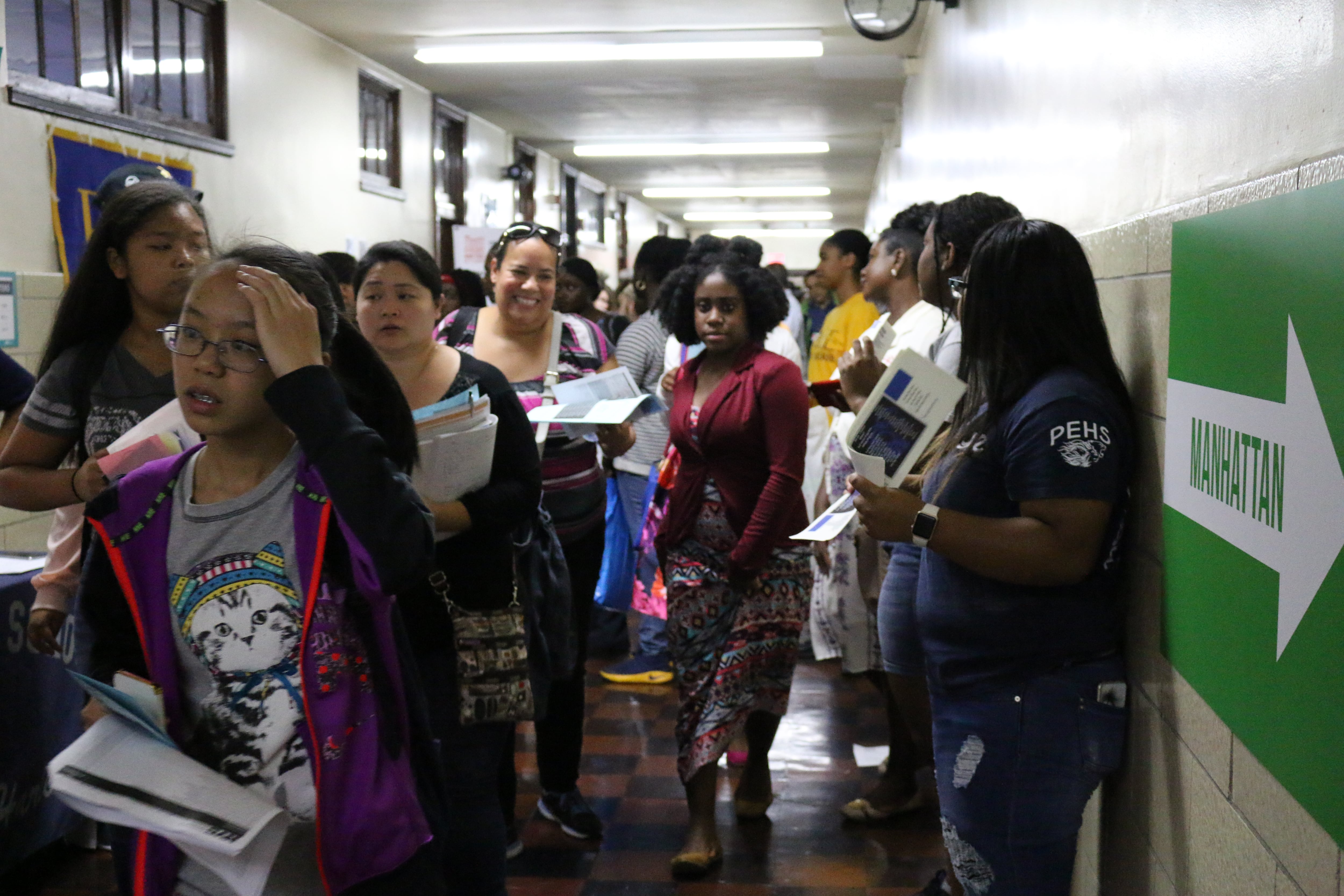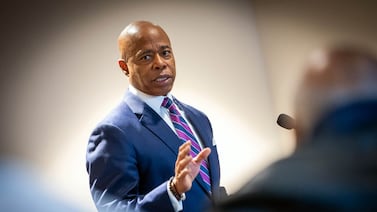When Chrishelle Thorpe’s eighth-grade son received his high school admissions offer in March, his heart sank. He did not get a seat at his top three choices, nor did he score high enough on the test for one of the city’s coveted specialized high schools.
Still, there was reason for optimism. Thorpe’s son was No. 19 on the waitlist at his first choice, Bard High School Early College Queens — part of a new system launched this admissions cycle that automatically adds students to waitlists at schools they listed on their applications but didn’t get into.
Then something odd happened: Her son’s position moved from 19 to 21, eventually falling to 31. “As we’re checking the waitlist and he keeps moving further back, I’m like, ‘How can you move back on a waiting list?’” said Thorpe, whose family lives in St. Albans, Queens. “It just doesn’t make sense.”

The goal of the new high school waitlist system — the biggest change to the admissions system in 16 years — was to simplify the process by allowing families to gauge their chances of getting into a school they weren’t initially admitted, officials said.
But students vying for the city’s most coveted schools are discovering that their position on high school waitlists can worsen over time, a situation that has come as a surprise to some families — adding anxiety to an admissions process that is already famous for its complexity.
The system is also causing headaches for some schools, as families flood their inboxes with questions about the new waitlists, which are now due to close on July 24 (the department originally said they would be open until September but faced pushback from principals).
“The way they explained the waitlists to a lot of parents, it was just confusing,” said Rob, a Brooklyn parent whose son dropped more than 20 positions on a waitlist. He requested his last name be withheld for fear of jeopardizing his son’s admissions prospects. “There really has to be some transparency from the [education department] about how this stuff works.”
City officials have argued the new waitlists are a standardized and fairer process for allocating the small number of open seats at schools that don’t enroll as many students as they projected. It also eliminates the previous appeals process, an opaque system that allowed families to challenge their admissions decisions for reasons including health issues, travel hardships, or safety reasons.
“We’re working with schools and families with any questions they may have during this inaugural year of waitlists and are glad to offer a new process that promotes more transparency than ever,” Katie O’Hanlon, a department spokesperson, said in a statement.
It was not clear how many students have moved backward on waitlists; department officials did not offer a number.
To understand how students can move backwards, it’s helpful to know how the waitlists work.
Every student who fills out an application and does not get into their top choice is automatically waitlisted. If you get your third choice school, for example, you’ll be on the waitlist for your No. 1 and 2 choices. Nearly 44,000 students did not get into their first choice high school this year, automatically placing them on at least one waitlist.
The second way is that students can add themselves to any waitlist once the initial matching process is over, even for schools a student didn’t initially apply to.
In general, students who initially applied to a school but didn’t get in and are automatically added to its waitlist should be ranked ahead of students who add themselves later on, officials said. But there are exceptions.
The first major exception is if a student is in a higher priority group than someone who is already on the waitlist. Some schools, for instance, give preference to students who live in certain neighborhoods, which can override a student’s position on the waitlist even if they were added first. (Officials said this is the most common reason a student would see their position worsen.)
Olga Ramos, the admissions director at Bard High School Early College Queens, pointed to a second reason families can move backward — something that surprised her at first.
If a student got into their first choice school, and listed Bard as their second choice, they could still add themselves to Bard’s waitlist and be considered as if they had been automatically added — potentially bypassing students who were already on the list. That’s why Thorpe’s son saw his position on the waitlist slip.
“That’s been difficult for families to swallow,” Ramos said, adding that it has been challenging to explain the ins and outs of the system to families who are eager to know whether they are likely to be called off the waitlist, or are demanding answers about why their rank has worsened.
Adding to the complexity, Bard has four different waitlists, since the school sets seats aside for students with disabilities and participates in a separate diversity initiative, which creates different pools of seats that each have separate waitlists. That means four different families think they are first in line.
But a student’s position on a school’s waitlist might not matter much.
There are over 2,800 students on the school’s waitlist, and Ramos doesn’t anticipate many students, if any, coming off the waitlist since the school will likely have no trouble filling its seats with those who received initial admissions offers.
A lack of movement off of waitlists is probably going to be the case at many schools — something city officials have previously acknowledged.
That has led some observers to question whether the waitlists will end up creating extra anxiety more than anything else.
“This was presented as, ‘Hey, we have this great new system,’ but it’s like dangling a carrot in front of your nose,” said Elissa Stein, a consultant who helps families navigate the application process. “This is what you’re holding on to as a hope you’ll get something better, but it’s very unlikely.”








